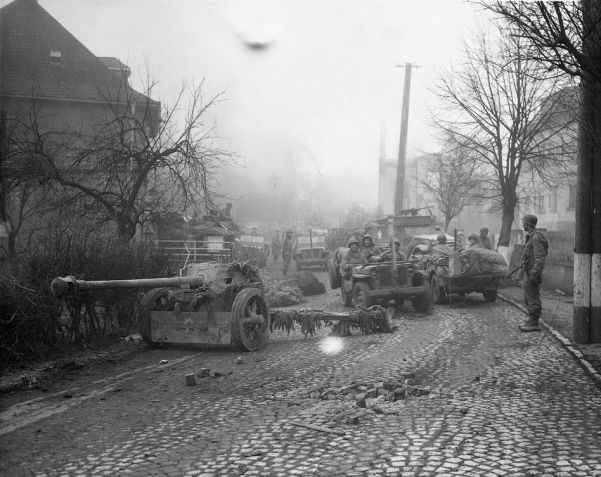
Built in competition with the Rheinmetall-Borsig 7.5cm PaK 40 as a means of providing the German Army with the best possible weapon to succeed the 5cm PaK 35/36, the 7.5cm Panzerabwehrkanone 41 was designed by Krupp, the other main creator of larger-calibre weapons for the German Army.
The weapon was characterized by the incorporation of several advanced features. The equipment was thus the largest of the Gerlich taper-bore guns with a calibre of 7.5cm at the breech reducing to 5.5cm at the muzzle. It possessed trail legs attached directly to the one-piece shield in a fashion that effected considerable economies in manufacturing time and also in weight, and incorporated an automatic hydraulic braking system operated by the towing vehicle. In addition, the PaK 41 had a commendably low overall silhouette, and its comparatively light weight was a decided advantage in handling the weapon.
But for its particular ammunition requirement, which was based on a tungsten-cored shot with collapsing light alloy skirts, and a barrel that lasted for only 400 rounds because of the demands placed on it, the PaK 41 might well have become a standard weapon. Thus only 150 PaK 41 guns were produced, and when tungsten for their special ammunition was exhausted, the weapons were scrapped.
Specifications
- Type
- medium towed AT gun
- Calibre
- 75/55mm (2.95/2.1in)
- Vehicle Length
- n/a
- Length of Barrel
- 4.32m (170in)
- Weight Travelling
- 1356kg (2989lb)
- Weight in Action
- unknown
- Elevation Arc
- 0° to +16°
- Traverse Arc
- 60°
- Effective Ceiling
- n/a
- Road Range
- n/a
- Range
- n/a
- Projectile Weight
- 2.59kg (5lb 11.25oz)
- Armour
- n/a
- Engine
- n/a
- Muzzle Velocity
- 1124mps (3690fps)
- Speed
- n/a
